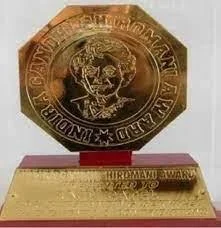UPSC GS 1
Nicobarese
- News: A new genetic research on Nicobarese revealed a significant ancestral connection with Austro-Asiatic populations across South and Southeast Asia.

- About the Nicobarese:
- Definition:
- The term “Nicobarese” is commonly used to describe an indigenous community that primarily resides in the Nicobar Islands.
- Geographical Location:
- The Nicobar Islands are part of the Andaman and Nicobar archipelago, located about 1,200 km off India’s east coast in the Bay of Bengal.
- Covering a land area of 1,841 square kilometers, the Nicobar Islands form roughly one-fourth of the total area of the Andaman and Nicobar archipelago.
- Out of the 24 islands in the Nicobar group, 12 are inhabited.
- Cultural and Linguistic Identity:
- The Nicobarese are part of the Southeast Asian cultural complex and communicate using an Austro-Asiatic language.
- Despite being grouped under a single term, they exhibit significant internal diversity, reflected in four distinct cultural groups based on their island habitats:
- Car Nicobar.
- Chowra (Chaura), Bompoka (Bompooka), and Teressa.
- Katchal (Katchall), Nancowry, Kamorta (Camorta), and Trinket.
- Little Nicobar, Kondul, Pulo Milo (Pilomillow), and Great Nicobar.
- Population Distribution:
- According to the 2011 Census, the Nicobarese population stands at 23,681.
- Nearly half of this population resides on Car Nicobar, while the rest are spread unevenly across other inhabited islands.
- Lifestyle and Livelihood:
- The Nicobarese maintain a largely self-sufficient lifestyle, relying on a combination of hunting, gathering, fishing, and pig farming for their sustenance.
Read also: Integrated Theatre Commands | UPSC Prep
UPSC GS 2
Indira Gandhi Prize for Peace, Disarmament and Development for 2024
- News: The Indira Gandhi Prize for Peace, Disarmament and Development for 2024 will be conferred on former Chile president and prominent human rights voice Michelle Bachelet.
- Introduction:
- The Indira Gandhi Peace Prize, also called the Indira Gandhi Prize for Peace, Disarmament, and Development, was established in 1986 by Indira Gandhi Memorial Trust to honor the legacy of former Indian Prime Minister Indira Gandhi.

- Award Details:
- Recipients are presented with a monetary award of ₹25 lakh and a citation.

- Criteria for Selection: Recognizes individuals or organizations that contribute to:
- Promoting international peace and development.
- Utilizing scientific discoveries for advancing freedom and improving humanity.
- Establishing a new global economic order.
- Notable Recipients:
- 1987: Mikhail Gorbachev, former leader of the Soviet Union.
- 1989: UNICEF.
- 1997: Jimmy Carter, former US president.
- 2003: United Nations and its Secretary-General Kofi Annan.
- 2013: Angela Merkel, Chancellor of Germany.
- 2014: Indian Space Research Organisation (ISRO).
- 2017: Former Indian Prime Minister Manmohan Singh.
- 2019: Sir David Attenborough, renowned environmentalist.
- 2021: Pratham NGO, for its contributions to education.
- 2022: Indian Medical Association and the Trained Nurses Association of India, for their service during the COVID-19 pandemic.
- 2023: Daniel Barenboim and Ali Abu Awwad, for their efforts in promoting peace.
International Energy Agency’s (IEA)
- News: The International Energy Agency’s (IEA) Global Conference on Energy & AI recently hosted a high-level roundtable aimed at fostering a strategic understanding of energy and artificial intelligence.
- Establishment and Purpose:
- The IEA is an autonomous intergovernmental organization functioning within the framework of the Organisation for Economic Co-operation and Development (OECD).
- It was established in 1974 following the 1973–1974 oil crisis to assist member countries in addressing significant oil supply disruptions.
- Over time, its mandate has expanded to include monitoring global energy trends, advocating for sound energy policies, and promoting multinational cooperation in energy technology.

- Core Objectives:
- The IEA focuses on four primary areas: ensuring energy security, promoting economic development, enhancing environmental awareness, and engaging globally on energy-related issues.
- Membership:
- The IEA currently comprises 31 member countries and 11 association countries.
- To qualify for membership, a country must be part of the OECD.
- Criteria for Membership: Countries aspiring for IEA membership must fulfill the following conditions:
-
- Oil Reserves: Maintain crude oil and/or product reserves equivalent to at least 90 days of the previous year’s net imports. These reserves must be accessible to the government for addressing global oil supply disruptions.
- Demand Restraint Programme: Implement a national program to reduce oil consumption by up to 10% during emergencies.
- Emergency Response Capability: Have legislation and organizations in place to execute Co-ordinated Emergency Response Measures (CERM) at the national level.
- Data Reporting: Ensure that all oil companies under its jurisdiction can provide information upon request.
- Collective Action Capability: Be equipped to contribute its share to IEA collective actions when required.
- India and the IEA:
- India became an Associate member of the IEA in 2017.
- The IEA regularly conducts detailed reviews and analyses of its member countries’ energy policies.
- Key Reports by the IEA: The IEA publishes several significant reports, including:
- World Energy Outlook
- World Energy Balances
- Energy Technology Perspectives
- World Energy Statistics
- Net Zero by 2050
UPSC GS 3
INS Tushil
- News: The Indian Navy will commission its latest multi-role stealth guided missile frigate, INS Tushil, at Kaliningrad, Russia, on 09 Dec 24.
- Class and Project:
- INS Tushil is an upgraded Krivak III class frigate, part of Project 1135.6.
- It is the seventh ship in this series and the first of two additional frigates being built under a 2016 agreement between India and Russia.
Project 1135.6
|
- Dimensions and Features: The frigate features a length of 125 metres and a displacement of 3,900 tonnes.

- Name and Motto:
- “Tushil” translates to “protector shield.”
- The crest symbolizes Abhedya Kavacham (Impenetrable Shield).
- Motto: Nirbhay, Abhedya aur Balsheel (Fearless, Impenetrable, and Powerful), reflecting the Navy’s commitment to protecting India’s maritime boundaries.
- Indigenous Contributions:
- Indian components increased to 26%, involving collaboration with Russia’s Severnoye Design Bureau.
- Includes 33 ‘Made-in-India’ systems, developed by major Indian manufacturers like BrahMos Aerospace Pvt Ltd.
- Operational Role:
- It will serve in the Indian Navy’s Western Fleet under the Western Naval Command.
- Enhances India’s maritime security and regional power projection.
- Importance: INS Tushil is equipped with advanced stealth features, making it less detectable by enemy radar and more stable in various sea conditions.
Kawasaki Disease
- News: Comedian Munawar Faruqu opened up about how his son battled with a life threating Kawasaki disease.
- Definition: Kawasaki disease is also referred to as Kawasaki syndrome or mucocutaneous lymph node syndrome.

- Overview:
- It is a rare condition that primarily affects children under the age of five.
- Characterized by fever and inflammation of blood vessels, it can cause serious complications if untreated.
- History:
- The disease was first identified by Dr. Tomisaku Kawasaki in Japan in 1967.
- The first cases outside Japan were documented in Hawaii in 1976.
- Causes:
- The exact cause of Kawasaki disease remains unknown.
- Cases are more frequent during late winter and early spring.
- Significance:
- It is among the most common causes of acquired heart disease in children.
- The disease triggers an immune response, causing inflammation and swelling in blood vessels.
- Affected Areas:
- Primarily targets the coronary arteries, which supply blood to the heart muscle.
- Can also affect lymph nodes, skin, and the mucous linings of the mouth, nose, and throat.
- Symptoms: Symptoms typically develop in two phases and may last several weeks. Common signs include:
- High fever persisting for over five days.
- Red eyes without discharge.
- Rash, often on the chest and groin.
- Swollen, reddened hands and feet.
- Red, cracked lips and a swollen, red tongue.
- Enlarged lymph nodes, especially on one side of the neck.
- Treatment:
-
- Treatment is typically administered in a hospital setting and includes:
- Intravenous immunoglobulin (IVIG) therapy to regulate the immune response.
- The primary aims are to reduce fever, alleviate swelling, and prevent heart-related complications.
Laysan Albatross
- News: The oldest known wild bird in the world, Laysan Albatross, has laid an egg at the ripe age of about 74, her first in four years.
- Scientific Name and Range: The Laysan albatross (Phoebastria immutabilis) is a large seabird predominantly found across the North Pacific region.

- Habitat and Population Distribution:
- Approximately 99.7% of the global population resides in the Northwestern Hawaiian Islands.
- The species spends most of its life over open tropical ocean waters.
- It nests on sandy or grassy areas of islands, with 94% of breeding pairs located on Laysan Island and Midway Atoll.
- Other nesting sites include smaller Hawaiian Islands, the larger islands of Oahu and Kauai, and select locations near Japan and Mexico.
- Flight Characteristics: Known for its exceptional ability to soar, the Laysan albatross can cover hundreds of miles daily with minimal wing movement.
- Physical Description:
- The bird’s back and upper wings are blackish-brown, while the primary feathers feature flashes of white.
- The underwings are predominantly white with black borders.
- A dark tail band becomes prominent during flight.
- Behavior and Breeding: Laysan albatrosses are monogamous and form lifelong mating pairs.
- Conservation Status: Listed as “Near Threatened” on the IUCN Red List.
Khorlochhu Hydropower Project
- News: The construction work of the Rs 6,900 crore Khorlochhu Hydropower Project in Bhutan has started, and the plant is likely to be commissioned by 2029.

- Location:
-
- The project is located on the Kholongchhu River in Bhutan’s Trashiyangtse district in the eastern region of the country.
- It is aimed at addressing Bhutan’s growing electricity needs and supporting India’s renewable energy transition.
- Significance:
- This is the first-ever energy project developed through a joint venture (JV) between India and Bhutan.
- Developing Entity:
- The project will be implemented by Khorlochhu Hydro Power Limited (KHPL), a joint venture between Bhutan’s Druk Green Power Corporation (DGPC) and India’s Tata Power.
- Capacity and Timeline:
- The hydropower project has a planned capacity of 600 MW.
- It is scheduled for commissioning by September 2029.
- Infrastructure Details:
- The project features a concrete gravity dam that will be 95 meters high, 165 meters long, and 6 meters wide.
- The dam will create a reservoir 1.4 km in length, with a gross storage capacity of 2.9 million cubic meters (MCM).
- Electricity generated will be transmitted via 400 kV transmission lines to the NEWNE grids of both Bhutan and India.
- Cost and Financing:
- The estimated cost of the project is £488.14 million (INR 46.32 billion).
- Financing is structured under a 70:30 debt-equity ratio, with the Government of India providing DGPC’s equity share.
See more: Falling Fertility Rates in India – Key Insights for UPSC
MuleHunter.AI
- News: The Reserve Bank of India recently announced the development of MuleHunter.AI, an AI-powered model designed to combat digital fraud by targeting “mule” bank accounts.
- About MuleHunter.AI:
- MuleHunter.AI is an advanced model based on Artificial Intelligence (AI) and Machine Learning (ML) technologies.
- It has been developed by the Reserve Bank Innovation Hub (RBIH), a subsidiary of the Reserve Bank of India (RBI).
- The system is designed to efficiently detect mule bank accounts, with a pilot project involving two major public sector banks yielding promising results.
- Advantages:
- Detection of Mule Accounts: The model specializes in identifying mule accounts used for facilitating fraudulent activities. It flags suspicious accounts by analyzing transaction patterns linked to the transfer of illicit funds.
- Real-Time Transaction Monitoring: It enables continuous, real-time tracking of transactions, helping financial institutions respond quickly to unusual activities and prevent fraud in its early stages.
- Advanced Data Analysis: The model uses sophisticated data analytics and machine learning algorithms to process large transaction datasets. This helps recognize patterns associated with fraudulent behavior, enabling proactive measures to stop scams.
- Promotes Institutional Collaboration: Encourages cooperation between banks, payment service providers, and law enforcement agencies that strengthens defenses against digital fraud.
- Supports Regulatory Compliance: Helps financial institutions meet anti-money laundering (AML) and combating the financing of terrorism (CFT) regulations.

- What is a Mule Bank Account?
-
- A mule account refers to a bank account misused by criminals for illegal purposes, such as laundering illicit funds.
- These accounts are often acquired from their original owners, typically individuals from lower-income groups or those with limited technical awareness.
- The term “money mule” describes individuals unknowingly exploited by criminals to move stolen or illegal money through their bank accounts.
- When these accounts are flagged for fraudulent activities, the money mule becomes the focus of investigations, while the actual perpetrators often remain hidden and undetected.
Green Tug Transition Program(GTTP)
- News: The Green Tug Transition Program(GTTP) aims to transition India’s harbour tug fleet from conventional diesel-powered vessels to greener alternatives.
- Launch: The GTTP was introduced on August 16, 2024.
- Objective:
- The programme aims to replace India’s conventional diesel-powered harbour tugboats with eco-friendly alternatives through a phased transition from 2024 to 2040.
- A tugboat is a specialized vessel that assists larger ships in navigating narrow channels.
- Alignment with Maritime Vision: The GTTP supports the Maritime Amrit Kaal Vision 2047, which seeks to reduce greenhouse gas (GHG) emissions from port vessels by 30% by 2030.
- Part of Panch Karma Sankalp: GTTP is a component of the Panch Karma Sankalp, comprising five key initiatives:
- Financial Support for Green Shipping: The Ministry of Ports, Shipping, and Waterways (MoPSW) will provide 30% financial assistance to encourage green shipping practices.
- Procurement of Green Tugs: Jawaharlal Nehru Port, VO Chidambaranar Port, Paradip Port, and Deendayal Port (Kandla) will each acquire two green tugs.
- Development of Green Hydrogen Hubs: Deendayal Port and VO Chidambaranar Port in Tuticorin are designated for development as green hydrogen hubs.
- Single-Window Portal for Cruise Monitoring: A centralized portal will be established to streamline and monitor river and sea cruise operations.
- Smart Ports Initiative: Jawaharlal Nehru Port and VO Chidambaranar Port in Tuticorin are set to become smart ports by 2025.
‘Jumped Deposit’
- News: The Cyber Crime Wing of the Tamil Nadu Police has issued an alert regarding a new scam that targets mobile money-users (those making payments through mobile phones).
- Target Audience: This scam primarily targets mobile money users who make payments using their mobile phones.
- Exploitation Method: The fraudulent scheme takes advantage of users’ trust to make unauthorized withdrawals via the Unified Payments Interface (UPI).
- Scam Process:
-
- Initial Deposit: The scam begins with the fraudster transferring a small amount, usually around Rs. 5,000, into the victim’s bank account through UPI.
- Notification and Prompting: The unexpected deposit triggers an SMS notification, which prompts the victim to check the balance in their account.
- Fraudulent Withdrawal: After the victim checks the notification, the scammer quickly initiates a withdrawal request from the account.
- Victim’s Response: Driven by curiosity, the victim opens their banking app and enters their personal identification number (PIN) to verify the deposit.
- Unauthorized Withdrawal: The victim’s action of verifying the deposit unknowingly approves a fraudulent withdrawal, often for an amount much higher than the initial deposit.


